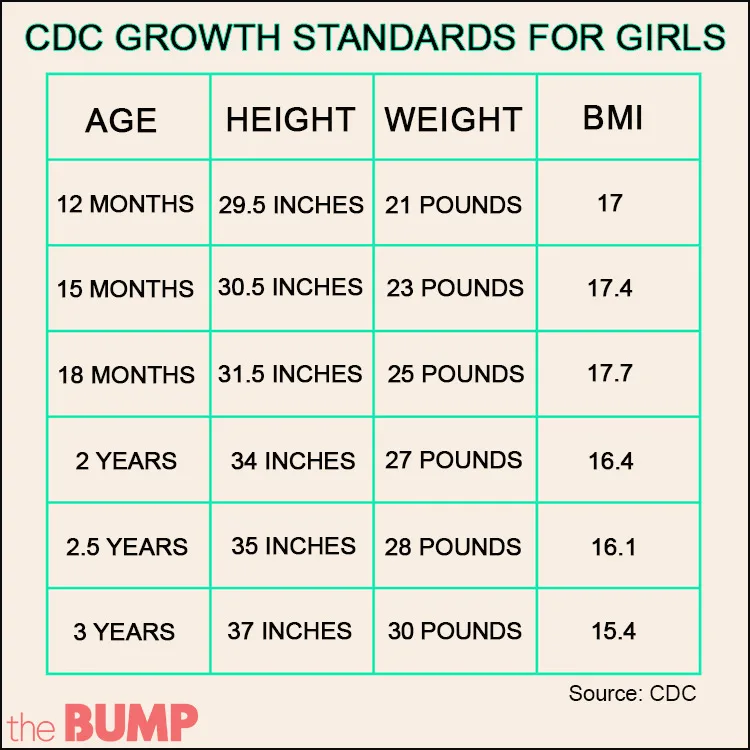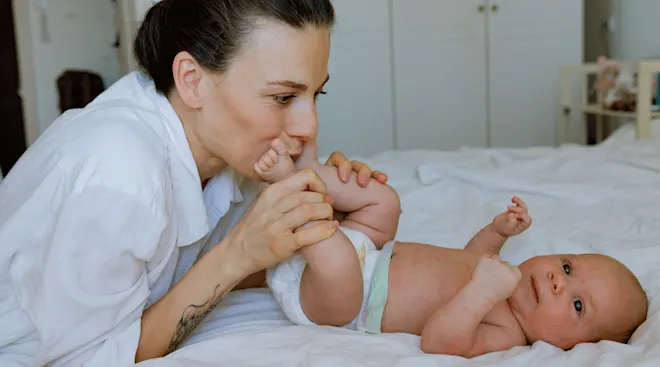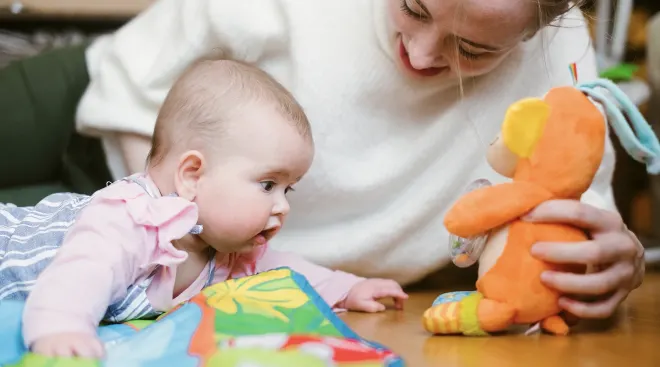Understanding Child Growth Charts
You love watching your child grow and kissing her chubby little arms and belly. But, given that obesity is such a big problem in this country, it’s natural to wonder at some point if your fleshy toddler is overweight. Know this: It’s completely normal for toddlers to appear chubby.
“Toddlers are short and compact, giving the appearance of a fat belly,” says Ashanti Woods, MD, a pediatrician at Baltimore’s Mercy Medical Center. There are a few other factors at play. Babies and toddlers usually have intestines that are a little oversized for their bellies, making those little tummies stick out, says Peter Greenspan, MD, vice chair in the Department of Pediatrics at Massachusetts General Hospital. They also have a forward curvature in their spine that pushes their bellies out, explains Danelle Fisher, MD, FAAP, chair of pediatrics at Providence Saint John’s Health Center in Santa Monica, CA. “As the child grows, the curvature straightens out,” she says. Combine all that with the fact that it’s just normal for little kids to have more body fat, Greenspan says, and you have all the ingredients for a round tummy.
As your child gets older and taller, the belly and chubby arms and legs tend to disappear, Woods says. Your child’s pediatrician is also tracking your child’s height and weight on a growth chart to see how they stack up against other children their age. If they suspect there’s a weight issue, it will be discussed at a well-visit. Still, it’s important for you to be aware of what’s considered average, and what’s not. Here’s what you need to know about the child growth chart, plus how to read it.
The growth chart looks at your child’s age, weight, and height and plots them on a chart, Woods explains. Once your child is plotted on the chart, his plot point falls on or near a percentage line that compares your child’s numbers with those of other children his age.
How often is a child’s growth measured?
Children are usually measured every time they have a well-visit, Greenspan says. That means children have their measurements taken every three months until they’re 18 months old, every six months until they’re 3, and then every year after that, per recommendations from the American Academy of Pediatrics, Fisher says.
What does growth chart percentile mean?
After your child is measured, you’ll often hear your pediatrician say that she’s tracking on a certain percentile for height and weight. The 50th percentile is average, Woods explains. “So, once a child is plotted on the weight chart, if her dot is above the 50 percent line, then her weight is above average for her age,” he says.
The following Centers for Disease Control and Prevention (CDC) boy growth chart outlines optimal growth measurements, including height, weight, and BMI, for children ages 1 to 3.
The following Centers for Disease Control and Prevention (CDC) girl growth chart outlines optimal growth measurements, including height, weight, and BMI, for children ages 1 to 3.
If your pediatrician says that your child is above the 50th percentile for weight, don’t panic. “We cannot make a comment about being overweight until we see where her height dot falls,” Woods says. “If her height dot is also above the 50 percent, then she is proportionately above average, but not overweight.” The same is true if your child is measuring below average, Greenspan says. “For weight, we usually go the BMI,” he says. If your child’s BMI is too high, doctors generally want to try to figure out why (although, Greenspan says, it’s often due to poor eating habits). If your child’s BMI is too low, her doctor may look into whether there could be a medical condition that’s keeping her from absorbing enough calories.
For kids who are a little above average, doctors generally want more details about their behavior, like how often they’re eating fruits and vegetables, their activity level and whether they tend to get out of breath quickly, says Melissa Santos, PhD, a pediatric nutritionist at Connecticut Children’s Medical Center. “That’s when we become concerned when they’re plodding above where they should be,” she says. “Kids grow at all shapes and sizes, and some just tend to stretch out sooner than others.”
With height, doctors generally factor in genetics, Fisher says, calling it a “really important factor.” “I will have families where one parent is particularly petite or large, and if their baby seems to be petite or large, we can reassure the parents and investigate what they were like as a baby,” she says. “But if the mom and dad are extremely large and baby is petite and not growing well, that’s a red flag.”
It’s pretty well-known that it’s tough to get toddlers to eat well, and you shouldn’t be hard on yourself if your child isn’t devouring his broccoli when you put it on his plate. “Toddlers are notoriously picky,” Greenspan says. “It’s best to offer healthy foods, not substitute junk, and hope that they will eat the right things.” If your child seems to want to survive on air and water, you should definitely consult with their doctor, but look at the big picture. “If they don’t have any medical or weight problems, you have to have faith that their bodies will get enough,” Greenspan says. “That’s usually what happens.”
There are a few ways to encourage healthy eating in toddlers. Santos recommends incorporating different colors and textures into your child’s diet, as well as getting your toddler involved in cooking. “Even at a young age, kids are more likely to try healthy things if they can participate in the making of it,” she says. So, have your toddler help rip up lettuce for a salad or mix things with a big spoon. “The more you can get them involved, the more you can encourage healthy foods,” Santos says.
And, of course, it’s important for you to help set a good example. “Kids aren’t going to eat things grown ups are squeamish about,” Santos says, so it’s important for you to try to eat well in front of your child to model healthy eating habits.
If you have questions about your child’s eating habits or are concerned about their growth, check in with your pediatrician. They will help address your concerns and make some suggestions to get you and your child on the right track.
Published April 2018
Please note: The Bump and the materials and information it contains are not intended to, and do not constitute, medical or other health advice or diagnosis and should not be used as such. You should always consult with a qualified physician or health professional about your specific circumstances.
Navigate forward to interact with the calendar and select a date. Press the question mark key to get the keyboard shortcuts for changing dates.






















































